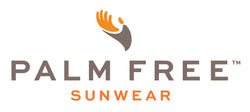Golf, Sun, and Skin Cancer

As a dermatology clinician in the southwest US a typical clinic day includes seeing a golfer with skin cancer. Since golfers spend 4 to 6 hours in the sun per round, ultraviolet solar radiation takes a toll on one’s skin.
The brief article in Golf Digest, August 2015 section The Core: Ways to Avoid Skin Cancer (page 36) touches on Beating Melanoma. This, no doubt, is a deadly form of skin cancer and if one has any questions about a new changing lesion, please have it evaluated by a dermatology clinician.
A diagnosis of melanoma is frightening and gives one pause, however let’s not over look the other skin cancers frequently found on golfers: squamous cell carcinoma (SCC) and basal cell carcinoma (BCC). In the dermatology world we call these non-melanoma skin cancers (NMSC). SCCs are mostly found on hands, arms, face, ears and neck and BCCs are mostly on the face, ears and neck.

10 things golfers should consider:
- Caucasian players over the age of 40 are more prone to pre-cancers and skin cancers.
- Higher-risk players are those with a long history of chronic sun exposure and continued sun exposure, i.e., the older golfer or outdoor enthusiast.
- NMSCs are found mostly on chronically sun-exposed areas: the face, ears, neck, arms and hands.
- NMSC are usually not life-threatening (although they can be) and left untreated, will grow and destroy skin tissue causing chronic ulcers. It is best they are treated.
- Those with a history of NMSC and pre-cancers require frequent dermatology follow-up (usually every 3 – 6 months) to identify if any new cancers have arisen from pre-cancerous lesions.
- Chronic sun exposure causes photo-aging such as wrinkling, discoloration, brown spots and can compromise the function of the skin.
- The best protection is proper clothing: wide-brimmed hats, high-collared and long-sleeved shirts and long pants.
- Sunscreens should be applied liberally and at the beginning of each nine holes.
- Inorganic sunscreens like zinc oxide and titanium dioxide tend to stay on the skin longer but do have to be wiped off at the end of a round.
- Golfers should have a skin exam at least once annually, more frequently if there is a history of skin cancer.
Golfers with a history of skin cancer: Adam Scott, Rory Sabbatini, Brian Davis, Aron Price, Andy North, Tom Kite, JC Snead, Butch Baird, just to name a few. Fred Couples has had several skin cancers removed from his hands.
Golf Digest recommendations on ‘Homemade Armor for the Sun’ hits spot on: prevention by sun protective clothing. Dark, tightly woven or knitted fabrics work best however, may be hot, so choose the clothing with a loose fit so air can pass through and create a mini air-conditioned feel. See blog post, Sun Protective Clothing Tips for Chemotherapy Patients.
Don’t forget the hands! As a golfer, your dermatologist will always check your hands. Often, we see fewer precancerous and NMSC lesions on the glove-covered hand. Our PalmFree™SunGlove is an easy option and avoids application of sunscreen to the back of your non-gloved hand.

Enjoy your golf and improve your game with these Golf Training Tips, but remember to protect your body armour….aka your skin!
References:
Golf Digest: Burned to a Crisp
PGA Tour: Sun Exposure an Occupational Hazard on the Tour




